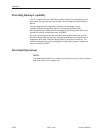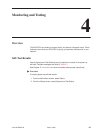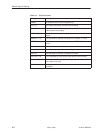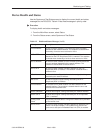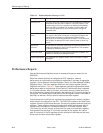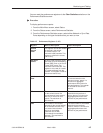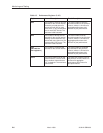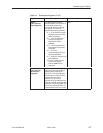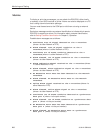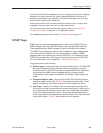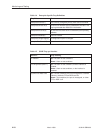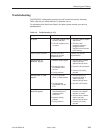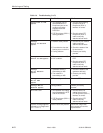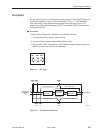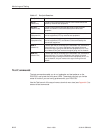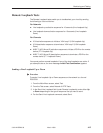
Monitoring and Testing
4-8
3162-A2-GB20-30
March 1999
Alarms
To display or print alarm messages, you can attach the DSU/CSU, either locally
or remotely, to an ASCII terminal or printer. Alarms can also be displayed on a PC
that is using a terminal emulation package.
You can route these alarms to the COM port or dial them out using an external
device.
Each alarm message contains a customer identification to indicate which remote
DSU/CSU is reporting an alarm. For information about customer identification,
refer to
Setting Customer Identification
in Chapter 3,
Operation
.
Possible alarm messages are as follows:
H Continuous Loss Of Signal detected at the
x
Interface
(where
x
is either Network or DTE).
H Alarm Cleared. Loss Of Signal condition at the
x
Interface (where
x
is either Network or DTE).
H Continuous Out Of Frame condition detected at the
x
Interface (where
x
is either Network or DTE).
H Alarm Cleared. Out Of Frame condition at the
x
Interface
(where
x
is either Network or DTE).
H Alarm Indication Signal received at the
x
Interface (where
x
is either Network or DTE).
H Alarm Cleared. Alarm Indication Signal at the
x
Interface
(where
x
is either Network or DTE).
H An Excessive Error Rate has been detected at the Network
Interface.
H Alarm Cleared. An Excessive Error Rate at the Network
Interface.
H Yellow Alarm signal received at the
x
Interface (where
x
is
either Network or DTE).
H Alarm Cleared. Yellow Alarm signal at the
x
Interface
(where
x
is either Network or DTE).
H Continuous Out Of Frame condition detected at synchronous
data port
n
(where
n
is the port number).
H Alarm Cleared. Out Of Frame condition at synchronous data
port
n
(where
n
is the port number).
H An Excessive Error Rate has been detected at synchronous
data port
n
(where
n
is the port number).
H Alarm Cleared. An Excessive Error Rate at synchronous
data port
n
(where
n
is the port number).



